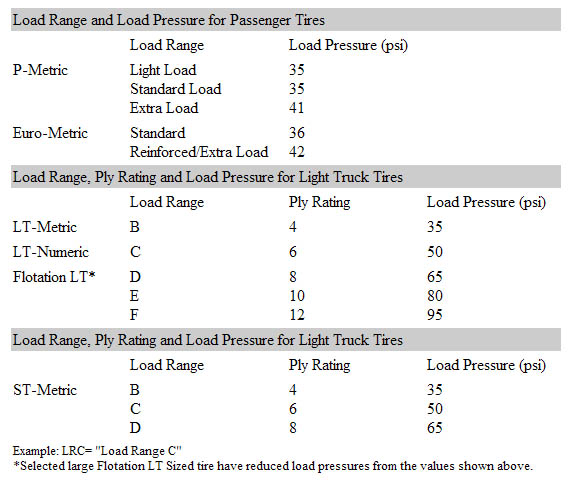Ply Ratings
treadworldcs2023-12-07T23:24:37-06:00What Is the Tire Ply Rating and Why Does It Matter?
In a nutshell, the tire ply rating provides you with a guideline as to the tire’s strength and capacity, providing information about its ability to hold air pressure and carry weight. The ply rating identifies the maximum load the tire can carry safely when it’s inflated to industry-specified pressure. Keep in mind, it’s not the tire itself that does the carrying, but rather the air contained inside the tire. So, a larger tire, or a tire with a higher air pressure capacity (pounds per square inch, PSI), will be able to carry a heavier load, and will have a higher ply rating. It’s important to match or exceed the ply rating of your tires to the load size and vehicle weight to avoid the bulging and overheating that can lead to blowouts.
How Does the Ply Rating Differ from the Tire Load Range?
You may have heard the terms “ply rating” and “load range” or load rating used interchangeably. For the most part, they mean the same thing. The term ply rating was used before the introduction of radial tires, to provide an indication of relative tire strength based on the actual number of body casing layers, or plies, used in creating the tire. Early bias tires used plies of cotton fabric placed at an angle to each other to provide strength to the tire. The original ply ratings referred to the number of cotton layers used in the tire’s construction. Thanks to technological advances, today’s tires no longer have cotton plies, and instead feature plies made of nylon, polyester and steel. Since these are stronger, fewer plies are required to achieve equivalent tire strengths. As used today, the ply rating still provides a relative measure of a tire’s durability, capability and limitations, but no longer actually identifies the number of plies used in the tire. Even tires with heavy-duty ply ratings as high as 12 or 14 likely only have two or three plies or one steel ply.
How to Know Which Ply Rating / Load Range You Need
To make a safe choice with regard to the ply rating of replacement tires, make sure you’re getting tires designed to meet or exceed the ply rating/load range of the original tires. You can generally find the ply rating on the sidewall, adjacent to the sizing information. Some tires are marked with ply ratings, some tires are marked with load ratings and some tires are marked with both. Use the ply and tire load range chart below when you want to determine how a specific ply rating translates to a load rating, and vice versa.
We Make Selecting Tires with the Optimal Tire Ply Rating / Load Range Easy
Finding tires with the proper ply rating is an easy part of the tire selection process here at Treadworld.com. On each page, after you select the tire size you want, you will be able to pick the ply rating / load range that best fits your needs, whenever more than one option is available. You will also see the minimum recommended PSI (inflation, pounds per square inch) at cold temperatures, and the recommended load capacity in pounds, that correspond with the size and ply you’ve chosen.

